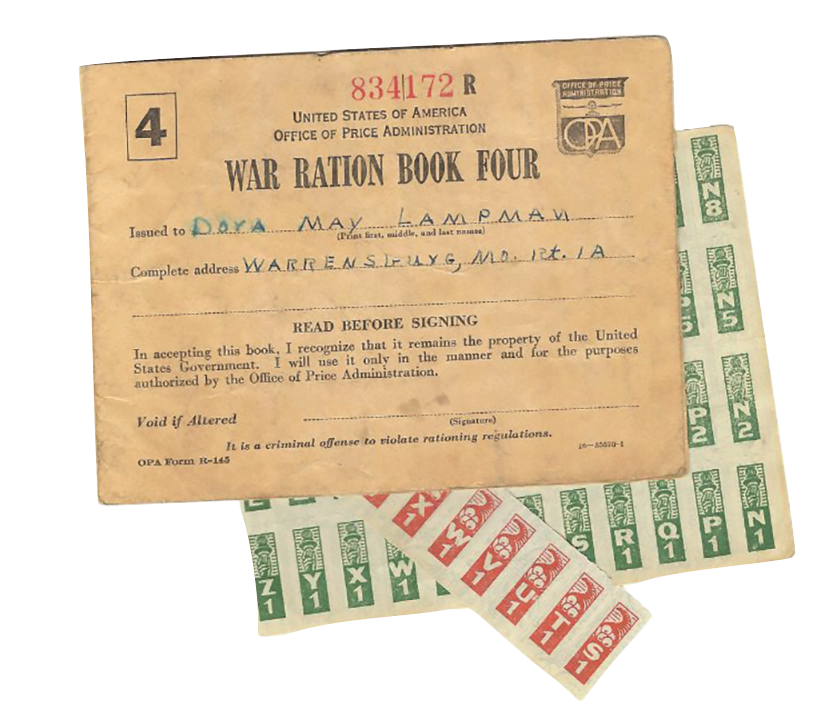
Dorri Partain
Assistant Editor
Following the attack at Pearl Harbor on December 7, 1941, American citizens faced shortages of certain items. Whether these items were being shipped overseas to support the troops and allies or imports were halted due to safety or transportation concerns, The Office of Price Administration, a division of the United States government, produced a ration stamp system that would fairly allow for the purchase of necessities. By May of 1942, Book One was being distributed to control the amount and price of white sugar, thus earning the nickname, ”sugar book”.
By November of that year, coffee was added, and subsequent Books 3 and 4 controlled the purchase of all meat, dairy, and fat products as well. The back cover of each book reminded the shopper to: “Never buy rationed goods without ration stamps. Never pay more than the legal price.”
Ration books were distributed to every American citizen regardless of age, but if a family member died before the book was completed, the remainder of the book had to be returned to the local Ration Board as all books were regarded as government property. Citizens under the age of 18 were not required to sign the book allocated to them.
The stamps inside the book were colored, numbered and lettered to indicate how and when they could be used. Stamps could only be removed at the time of purchase and in sight of the clerk handling the transaction. Loose stamps were considered void, but torn stamps still inside the book were considered valid.
Ration Book Four, issued in 1943, contained eight pages totaling 384 stamps. Green and blue stamps were used to buy canned goods, red was for meat, and black was coffee, sugar, and numerous “spares” that would be implemented in the event adjustments were made to the rationing program.
Throughout the rationing program, which officially ended in 1947, citizens were advised, “Give your whole support to rationing and hereby conserve our vital goods. Be guided by the rule: If you don’t need it, DON’T BUY IT.”



















